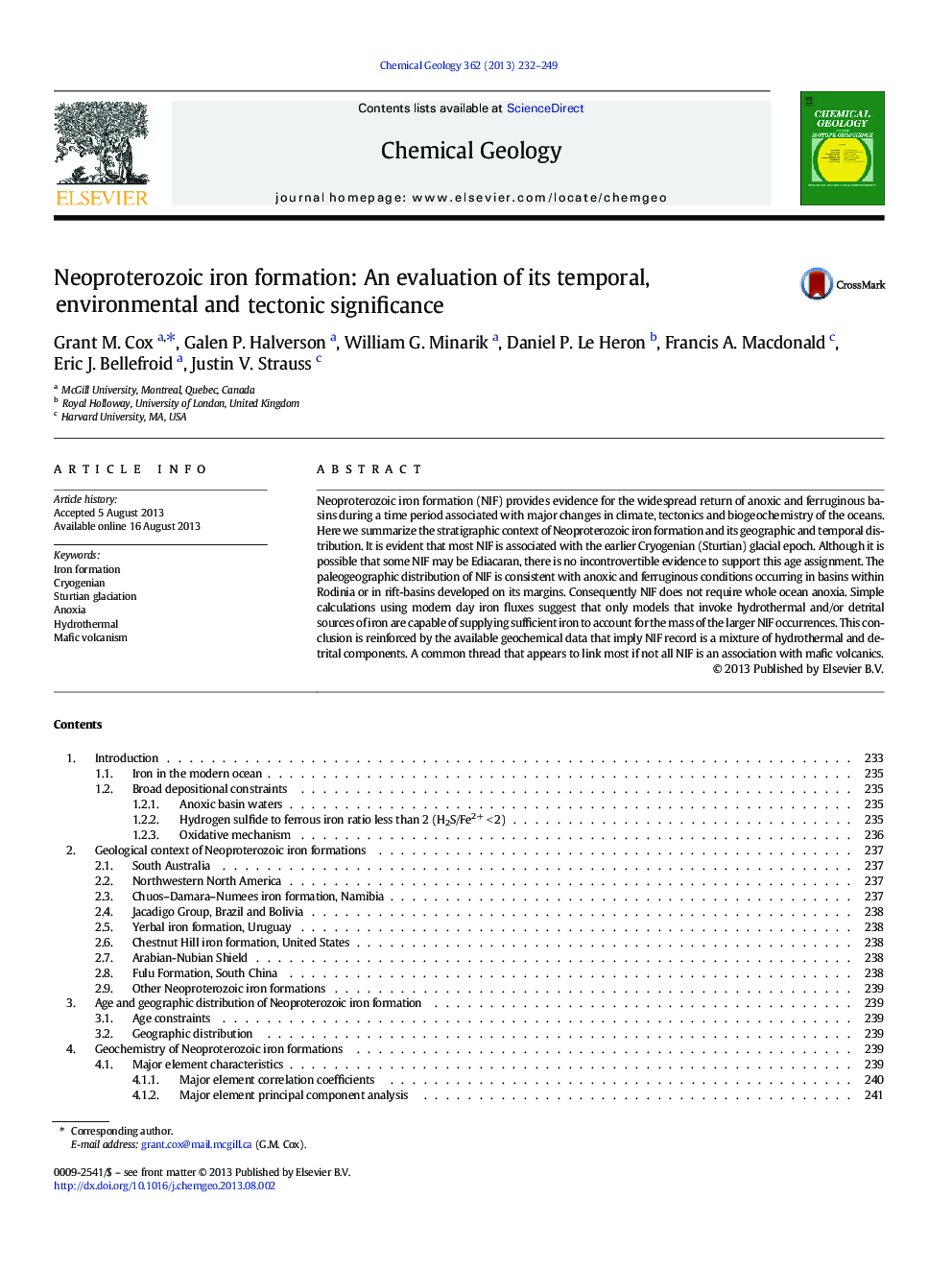| Article ID | Journal | Published Year | Pages | File Type |
|---|---|---|---|---|
| 6436775 | Chemical Geology | 2013 | 18 Pages |
â¢Most Neoproterozoic iron formation is Cryogenian in age and associated with glaciation.â¢Neoproterozoic iron formation does not require whole ocean anoxia.â¢Mafic volcanism and glaciation tipped the balance towards ferruginous conditions.
Neoproterozoic iron formation (NIF) provides evidence for the widespread return of anoxic and ferruginous basins during a time period associated with major changes in climate, tectonics and biogeochemistry of the oceans. Here we summarize the stratigraphic context of Neoproterozoic iron formation and its geographic and temporal distribution. It is evident that most NIF is associated with the earlier Cryogenian (Sturtian) glacial epoch. Although it is possible that some NIF may be Ediacaran, there is no incontrovertible evidence to support this age assignment. The paleogeographic distribution of NIF is consistent with anoxic and ferruginous conditions occurring in basins within Rodinia or in rift-basins developed on its margins. Consequently NIF does not require whole ocean anoxia. Simple calculations using modern day iron fluxes suggest that only models that invoke hydrothermal and/or detrital sources of iron are capable of supplying sufficient iron to account for the mass of the larger NIF occurrences. This conclusion is reinforced by the available geochemical data that imply NIF record is a mixture of hydrothermal and detrital components. A common thread that appears to link most if not all NIF is an association with mafic volcanics.
